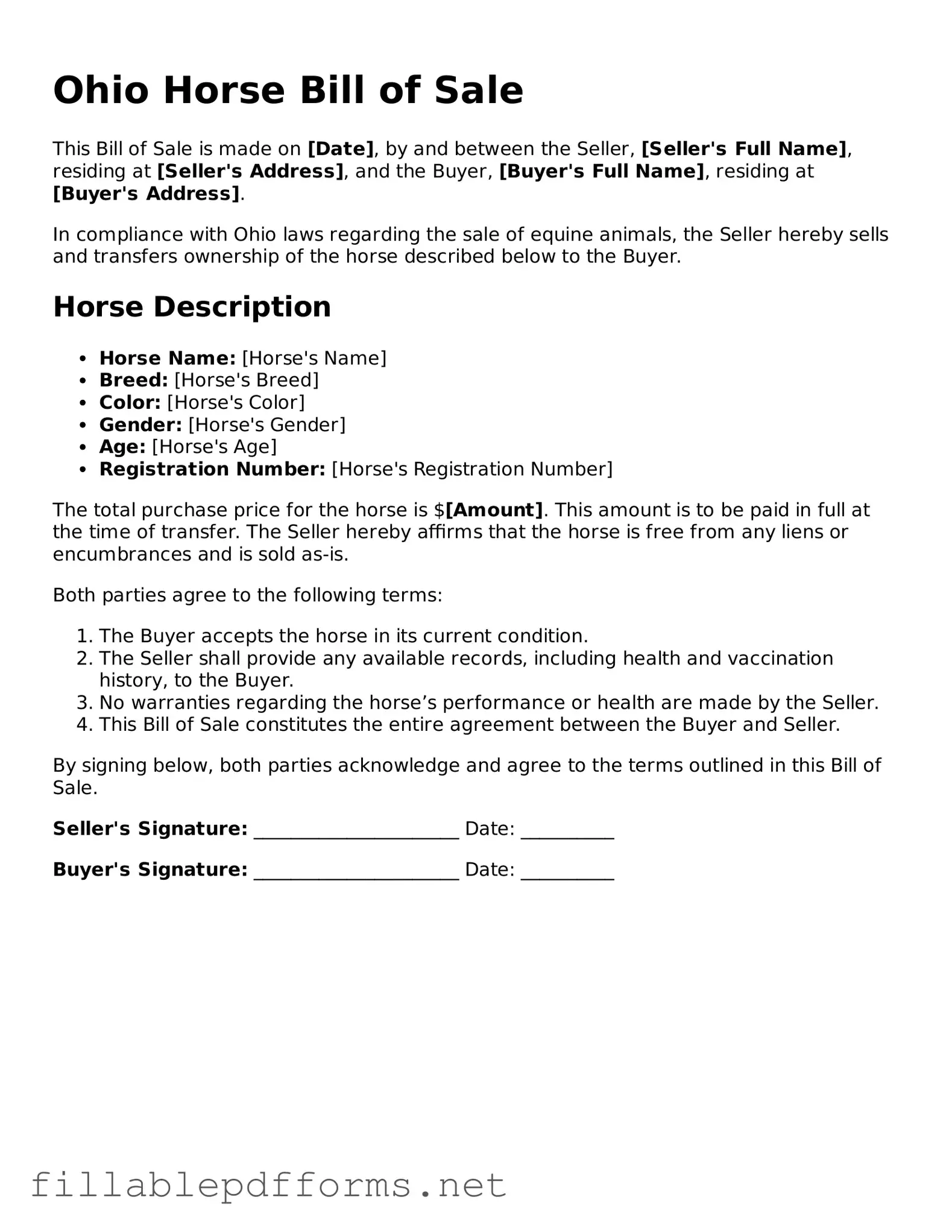The Ohio Horse Bill of Sale form serves as a critical document for individuals engaged in the buying or selling of horses within the state. This form outlines essential details that protect both the buyer and the seller, ensuring a clear transfer of ownership. Key components include the identification of the horse, such as breed, age, color, and any unique markings, which help to avoid any disputes regarding the animal's identity. Additionally, the form requires the seller to disclose any known health issues or defects, fostering transparency in the transaction. Payment terms, including the sale price and method of payment, are also specified, providing clarity and security for both parties. Furthermore, the document typically includes a section for signatures, which formalizes the agreement and signifies acceptance of the terms laid out. Understanding the importance of this form is vital for anyone involved in equine transactions, as it not only fulfills legal requirements but also lays the groundwork for a trustworthy exchange.
